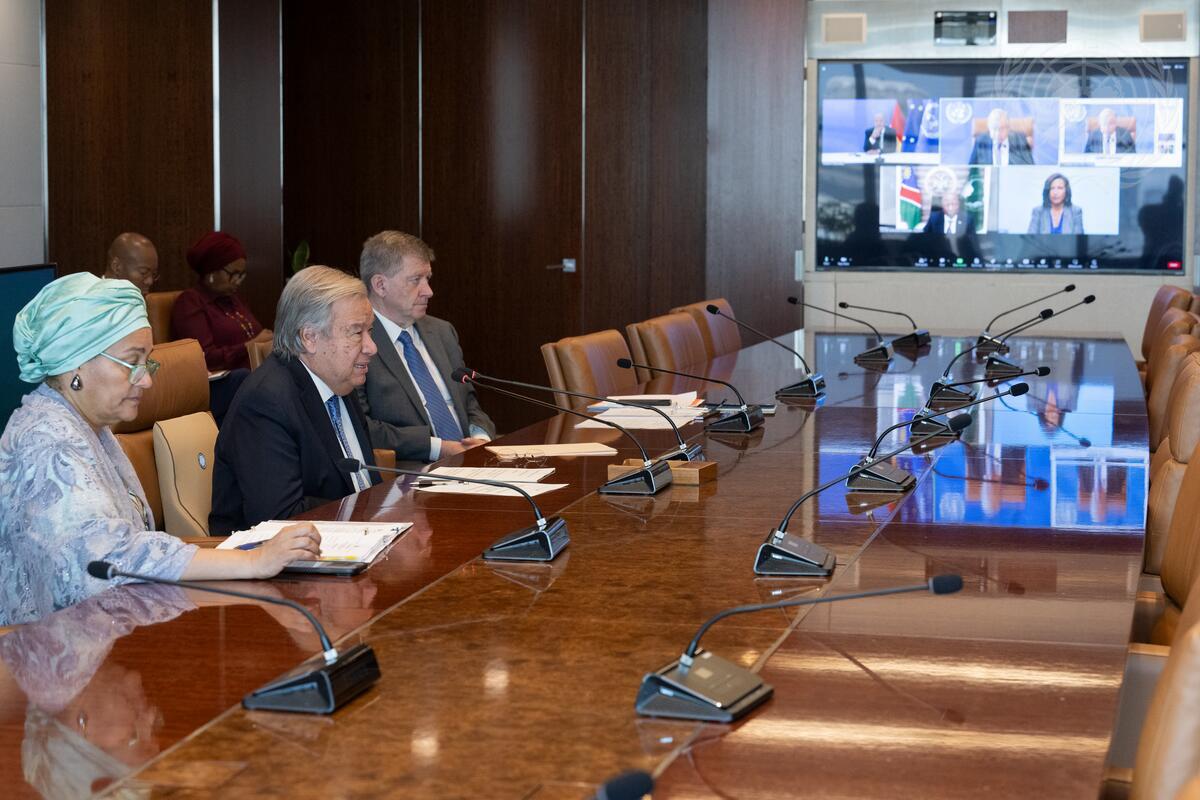New York City is gearing up for the next United Nations General Assembly, but the gathered diplomats wandering the halls of UN headquarters ahead of the leaders arriving next week are showing little enthusiasm for the headline act. Billed as a “Summit for the Future” to coincide with the annual UN talks, the hope is to deliver a “pact” as the main outcome – yet despite rafts of draft text, the diplomats involved have struggled to define what the vision really all means.
For a document aiming to adapt the work of the UN to the problems of the 21st century – such as artificial intelligence, nuclear proliferation, climate change, and the space race – the negotiations are instead seen by many as having brought out the worst in international diplomacy, serving as a mirror to a turbulent world.
Negotiators have refrained from including mention of any specific conflict in the pact since the very beginning of the negotiations.
“We hear the Secretary-General’s acknowledgment that today’s global order simply does not work for anyone,” said Ukraine’s ambassador to the UN Sergiy Kyslytsya during a Security Council meeting on 10 September, bemoaning the difficulties in the organisation following Russia’s invasion of Ukraine. “Meanwhile, on the eve of the Summit of the Future, we are debating whether we can even use the word “aggression” in its final document.”
Positions are so far apart that the draft document currently includes language reflecting what is privately described by officials as the “lowest common denominator” that the UN’s 193 member-states can agree on.
But it’s not just Ukraine. Russia is also pessimistic about the process. As one Russian diplomat told me a few months ago, “What’s the point of talking about the future when the world is on the brink of collapse?” Still, while Russia doesn’t appear to see the value in the Summit of the Future, it does spend considerable diplomatic energy to disrupt negotiations over the final document, expected to be passed at the beginning of the Summit, by bickering over the use of words such as “aggression”. Negotiators have refrained from including mention of any specific conflict in the pact since the very beginning of the negotiations, but Russia still opposes the inclusion of that word, and many others.

In 2021, UN Secretary-General António Guterres published Our Common Agenda, his vision for the future of global cooperation, and called for a summit on the subject matter – which will take place right before the General Assembly high-level debate. However, back then, the Covid-19 pandemic was still raging around the world and Russia hadn’t launched its full-scale invasion of Ukraine. As such, many New York-based diplomats complain that these issues should be prioritised over efforts to pull together a vague, weak, and hard-to-implement idealistic document.
But the current underwhelming state of the negotiations will not deter top politicians from travelling to New York City for the event. The UN expects more than 130 presidents or prime ministers to attend the Summit for the Future, along with representatives of some 7000 non-governmental organisations. While many world leaders plan to attend the Summit, it is notable that none of the leaders from the Permanent Five members of the Security Council are currently on the list of participants.
Most observers doubt the final pact will be anywhere near as visionary as the UN Charter or the Agenda 2030 – the cynics among them believing the event is a way for leaders to “show up and pretend they are doing something”, while more generous readings see the summit as an important, albeit imperfect, effort.
It is expected that the effort to find common ground on reforming international financial institutions could be debated until the very last minute.
Three topics have emerged as the main sticking points in the process of agreeing on language for the pact: disarmament, especially the use of nuclear weapons; Security Council reform; and the structure of international financial institutions. The thorniest issue appears to be the last, which is a priority for developing countries that feel left out by the current Bretton Woods system. It is expected that the effort to find common ground on reforming international financial institutions could be debated until the very last minute.
Guterres’ term is scheduled to end in January 2026. And even though he still has his work cut out to convince delegates of the importance of the summit, officials insist the pact can be a positive legacy.
“The problems that we face today – whether it’s climate, whether it’s pandemics – know no border,” said Guterres’ spokesperson at a briefing last week when asked to distil what the Summit of the Future is all about, and why people should care.
We are living at a time where there is no greater need for highly functioning, just and fair international institutions … Not one country can deal with [the issues] by themselves. We need those institutions. We need those institutions also for the economic well-being of countries. The institutions that we have now, that came out of the Second World War are no longer fair. They’re no longer just, or as just as they could be, and this is a chance for member states to come together and find a better way forward.

